1. Hanjin Pennsylvania
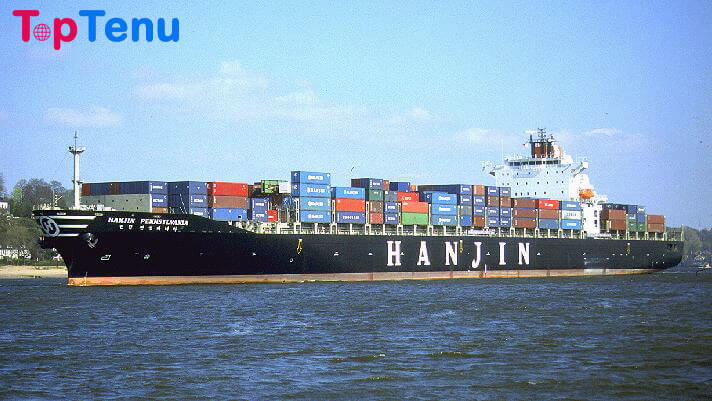
http://www.fortunes-de-mer.com/old/rubriques/liens%20et%20contacts/detailsactualites/HanjinPensylvania2002ru.htm
Two explosions rocked the brand-new Hanjin Pennsylvania in 2002 before it even hit its first birthday. The first hit, when she was traveling from Singapore to Germany, rocking the cargo hold and shaking the crew’s nerves to bits.
The second one, four short days later, was even more catastrophic, killing two crew members and puzzling everyone on board as to what could be causing this 925-foot, spanking-new vessel to burst into flames. The culprit turned out to be a simple but fatal, clerical error.
Containers of fireworks were misdeclared before the Hanjin Pennsylvania ever left the Singaporean seas, and the inflammable cargo was setting off spontaneous blasts. Fortunately, the Hanjin Pennsylvania didn’t falter or sink, but she was deemed a loss and repurposed for scrap.
Later, this catastrophic cargo ship was reborn as the Norasia Bellatrix and was one of the critical catalysts for cargo ship reform and better reporting.
We can only hope that her crew is a little more careful about what kind of explosives they let on board.
2. M/V Bai Chay Bridge
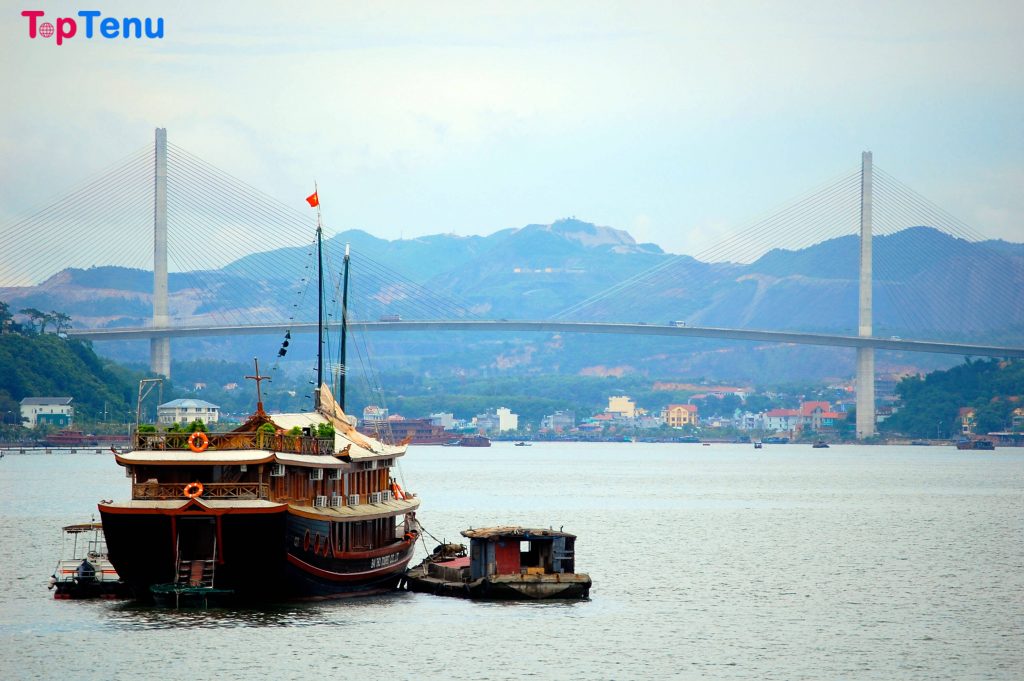
In 2012, the M/V Bai Chay Bridge found herself in a nasty encounter with Typhoon Guchol, a vicious storm that whipped over the Philippines and landed in the seas near Japan. Although the hearty ship survived the storm, much of her cargo toppled into the waves, and other containers crashed on deck, spilling their contents and terrifying the crew.
M/V Bai Chay Bridge’s survivors later recounted their ordeal in The Typhoon Encounter of M/V Bai Chay Bridge, claiming that they were delivered right into the belly of the beast, which was Typhoon Guchol. According to reports, the storm whipped up in intensity as it raced across the sea.
Although the photos from M/V Bai Chay Bridge are astounding, and the loss of cargo was tremendous, only 18 people were injured. Today, the M/V Bai Chay Bridge is still operational and sails under the flag of Panama.
3. ONE Apus
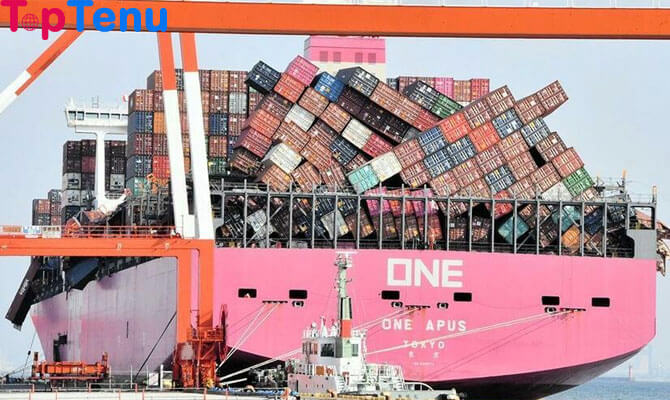
2020 was a bad year for the ONE Apus, who lost 1,816 containers of goods, including 64 that were labeled as dangerous goods, while it was crossing the Pacific Ocean. It is one of the most costly and catastrophic cargo ship failures.
This mighty ship succumbed to weather events beyond its control, eventually suffering an enormous collapse of untold numbers of containers, many of which plunged into the depths of the Pacific.
The ONE Apus was on its way to Long Beach, California, when the disaster occurred, and we’re still grappling with the severity of the accident and struggling to determine what can be done to solve these problems in the future.
ONE Apus’ containers were stacked as much as 8 high, which might have been a significant contributing factor. Drone footage from the immediate aftermath shows the seas simply littered with containers, begging the question of how marine life could be affected. One thing is for sure; we will be cleaning up oceanic debris for a long time to come.
4. Hyundai Fortune
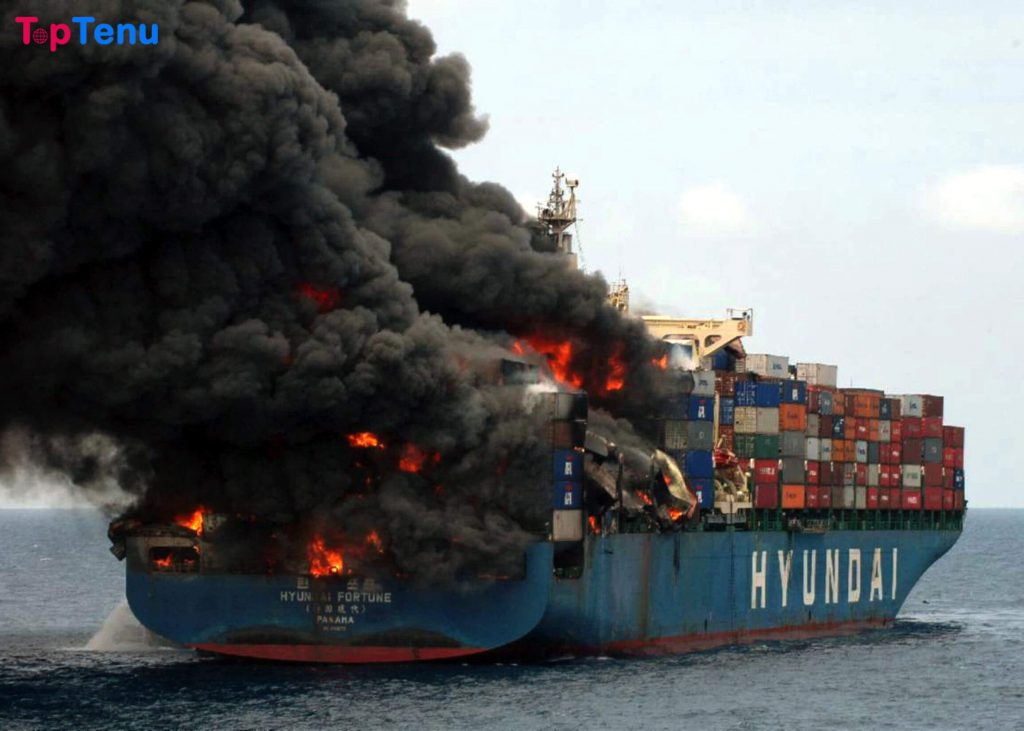
The not-so-fortunate Hyundai Fortune was lost to the seas after it blew up in a catastrophic explosion that remains a mystery to this day. In 2006, the 898-foot Hyundai Fortune was traveling through the Gulf of Aden of Yemen’s coast when a nightmare blast spilled thousands of containers out into the small sea, creating a five-mile debris field.
For reference, that’s 88 football fields full of wreckage from the Hyundai Fortune. The ship instantly caught fire, smoldering for several days on end until it finally burned out.
All of the crew, 27 in total, abandoned the ship and were rescued and brought to shore. Miraculously, nobody died, and even more surprisingly, only one person sustained minor injuries. Perhaps the ship wasn’t fortunate, but the crew certainly seemed to be.
Once the mighty fire was extinguished, the wreck of the Hyundai Fortune was towed to Salalah, Oman. All told, the Hyundai Fortune lost between 1,000 to 3,000 containers that day, with not a single one recovered from the sea.
Amazingly, she was able to be repaired and continued delivering cargo until 2018. Number 5: MSC Flaminia In 2012, the MSC Flaminia suffered a nightmarish ordeal, a series of explosions that set off a raging inferno in her cargo hold.
The ship, flying under a German flag, was traveling across the chilly waters of the North Atlantic when she first started having problems.
The trouble started in Hold 4, and the crew, thinking that it was just a minor hiccup, released C02 to quell it. Unfortunately, this reasonable step that would work for most situations was the worst thing to do in the case of the MSC Flaminia.
She was carrying highly inflammable cargo that contained a highly flammable substance, divinylbenzene, that started a chain reaction and led to the abandonment of the ship.
The cargo’s manufacturer, Deltech, was later held liable for the blast. In addition to the cargo lost in the explosions and blaze, three people died, and two were seriously injured.
The rest of the crew abandoned the 984-foot burning MSC Flaminia, which continued to smolder for nearly a month, damaging the vessel itself and belching up tons of toxic smoke into the air.
Thanks to the MSC Flaminia disaster, there are now new rules about what kinds of cargo can be aboard ships, as well as emergency protocols to rescue cargo ships in distress.
5. Maersk Honam
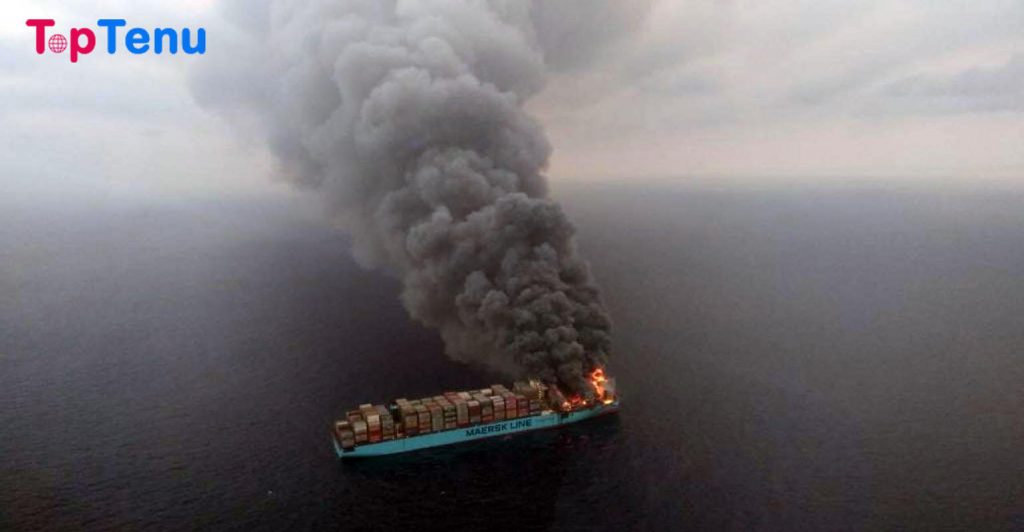
The 1,153 foot Maersk Honam was classified as an Ultra Large Container Ship, which made its fiery disaster all the more catastrophic. In 2018, the Maersk Honam suffered a mega-fire worthy of its vast size when it was traveling through the Arabian Sea.
The ship was relatively new, having been built in South Korea just one short year earlier, so nobody saw the fire coming. It was all smooth sailing until March 6, when a fire burst in the cargo hold. It destroyed the ship’s 7,860 containers and killed 5 crew members before the carnage was over.
The remaining 23 crew members were eventually rescued and brought to shore, but the Maersk Honam kept burning, blazing for well over a week and destroying the entire massive cargo hold area.
The fire was so gigantic that there were reports that it could actually be spotted from space. Eventually, the broken hulk of the ship burned itself out.
The cause of the blast? A chance freak accident caused by some of the contents of its containers. It was determined that the Maersk Honam was carrying Sodium Dichloroisocyanurate Dihydrate, or SDID, which decomposed quicker than it should have, sparking the deadly blaze.
6. Rena Monrovia
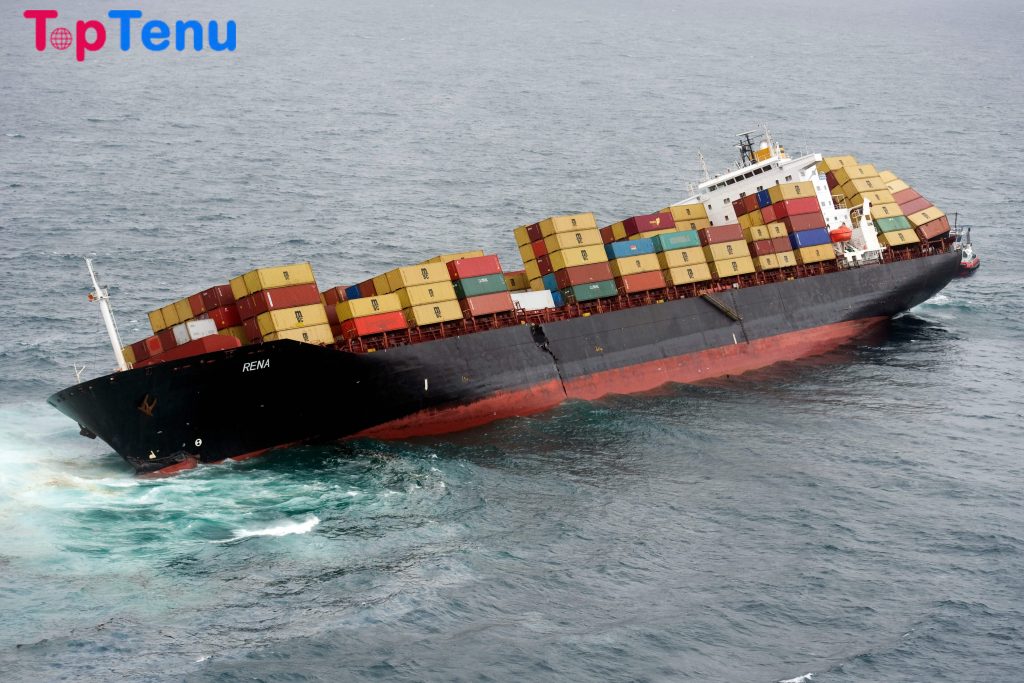
In 2011, Rena Monrovia ran aground in New Zealand, causing untold damage to the Astrolabe Reef and spilling tons of oil into the vulnerable seas, as well as dumping most of its containers during the accident.
Unlike many of our other failed cargo ships, this one can be chalked up primarily, if not exclusively, to human error. High ranking ship officers plead guilty after the wreck, conceding to mishandling the ship and changing documents to avoid taking responsibility.
Seaman scandal aside, the Rena Monrovia struck a severe blow to nature as she festered on the reef, leaking toxins into the ocean below and affecting marine life.
As she couldn’t be towed to shore, salvers had to take her apart right on the reef, further harming the sensitive coral. Sea birds and fish suffered in the hundreds of tons of fuel that gushed from the Rena Monrovia, and her grounding is thought to be the worst maritime environmental disaster to ever hit New Zealand.
On a bright note, clean up efforts have helped to restore the reef to its former beauty and help vulnerable animal populations get their slice of sea back.
7. MSC Napoli
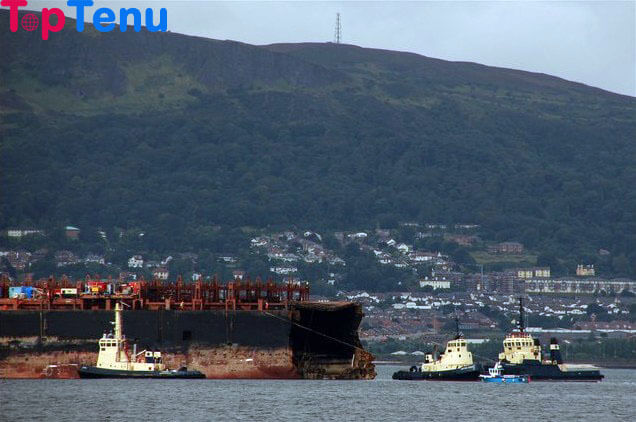
The MSC Napoli failed the seaworthy test in January 2007 when the 902-foot vessel started to crack and flood en route from Belgium to Portugal. While nasty weather in the English Channel certainly exposed the MSC Napoli’s weaknesses, the question remains as to why she was so vulnerable, to begin with.
Fortunately, nobody perished during the ordeal, but all of her 26 crew members needed to abandon their ship, leaving the MSC Napoli to be towed in and sold for scrap… except that’s not exactly how it happened.
When officials saw the damaged MSC Napoli, they decided to beach her at Lyme Bay rather than tow her all the way to the port.
The beached ship was stripped of her cargo and fuel, and officials tried a second time to get her to port, only to re-beach her again.
Eventually, the MSC Napoli had to be intentionally blown to pieces, with her three severed off sections sold for scrap. Astonishingly, the time between her initial cracking and eventual salvaging was two and a half years.
8. MOL Comfort
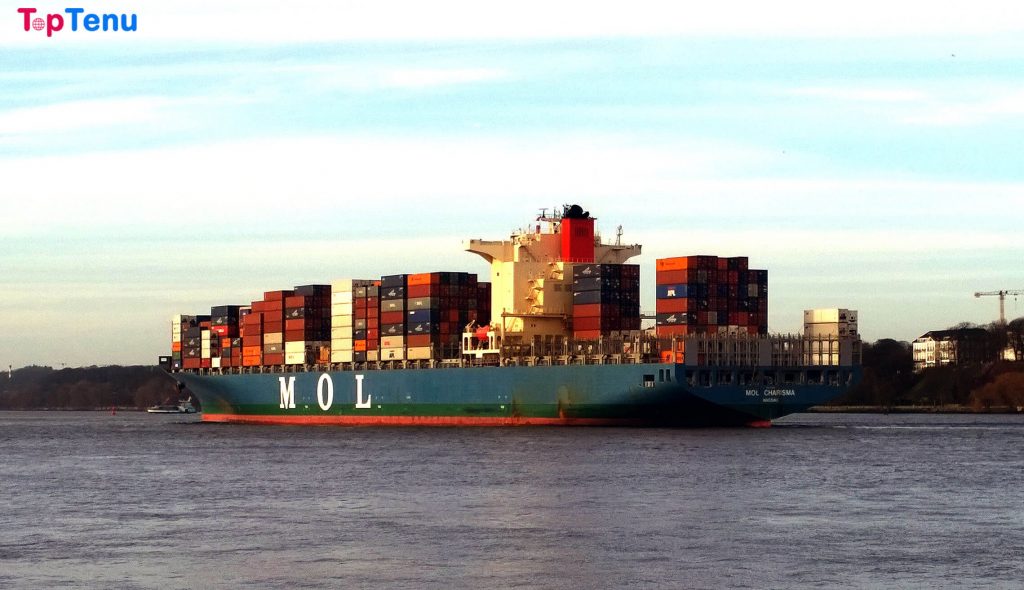
In 2013, the MOL Comfort suffered a disastrous turn of events that made it arguably the most catastrophic and sensationalistic cargo ship failure in modern history.
The 5-year-old MOL Comfort was sailing in the Indian Ocean when she literally broke into two pieces, sagging down at either end and spilling hundreds of containers into the sea.
Amazingly, nobody in the crew was hurt or injured in the accident, but the MOL Comfort herself was in for a rough ride.
The ship didn’t sink initially but bobbed along as it continued to dump containers into the surrounding sea. It remained this way for 10 full days, when the stern sank, carrying its remaining cargo with it.
The bow didn’t fare much better. It caught fire and sank a few weeks later, plunging its containers to the seafloor as well. It’s estimated that the MOL Comfort was carrying 4,293 containers, and all of them were lost to the waves, the single greatest loss of cargo a container ship has ever suffered.
Thanks for reading! Would you rather lose your life savings on the MOL Comfort or take your chances on the MSC Flaminia? Let us know in the comments section below.





